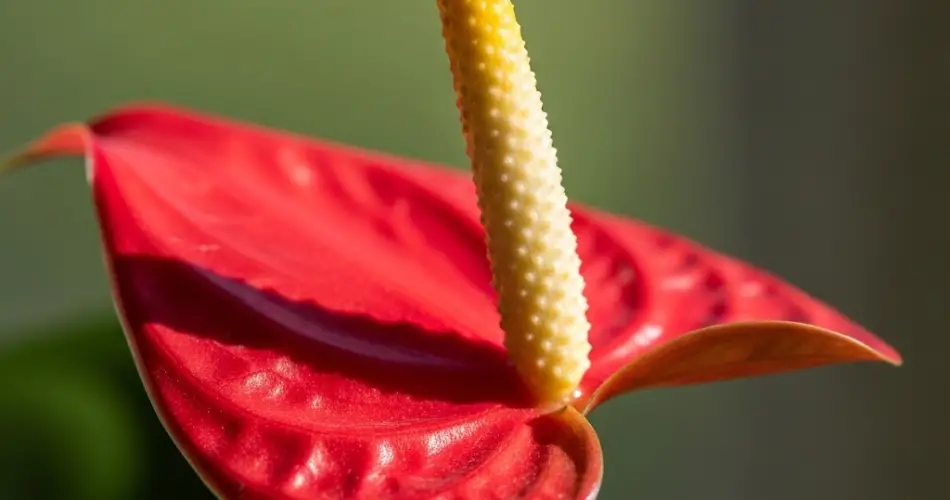If you’ve struggled to keep houseplants alive, you’re not alone. Many beginners find themselves discouraged after a few wilted leaves or dried-out pots. But there’s hope—and the vibrant anthurium might just be the plant to change your luck. Known for its heart-shaped leaves and bright, waxy flowers, anthurium is both stunning and surprisingly forgiving when cared for properly.
With a little knowledge and consistency, even self-proclaimed “plant killers” can nurture anthuriums successfully. This guide will take you step by step through everything you need to help your anthurium thrive indoors—no green thumb required.
What Makes Anthurium a Good Plant for Beginners?
Anthuriums are tropical perennials, commonly called “flamingo flowers” or “laceleafs.” Their vivid red, pink, or white blooms are actually modified leaves called spathes, and they can last for weeks, sometimes months. Even when not flowering, the plant’s glossy green leaves offer a lush, decorative look.
Why beginners should give anthuriums a try:
-
They tolerate indoor conditions well.
-
They bloom repeatedly with proper care.
-
They’re adaptable to various light levels.
-
They’re relatively low-maintenance.
Start with the Right Pot and Soil
Anthuriums thrive in well-draining pots. Choose a container that has drainage holes to prevent water from pooling at the roots. Standing water can lead to root rot, one of the most common causes of plant failure.
When it comes to soil, anthuriums prefer a light, airy mix that mimics their natural tropical habitat. Look for or create a mix containing:
-
Orchid bark
-
Peat moss or coco coir
-
Perlite
This combination promotes excellent drainage while retaining enough moisture to keep roots hydrated.
Light: The Key to Happy Blooms
Light is essential for your anthurium to flower. Too little light and you’ll see lots of green growth but no blooms; too much direct sunlight and the leaves will scorch.
The ideal setup is bright, indirect light. A few tips:
-
Place your plant near an east or north-facing window.
-
Filter harsh sunlight with sheer curtains if using a south or west-facing window.
-
Avoid complete shade or direct midday sun.
If your space is dim, you can supplement with a grow light for a few hours each day.
Watering Without Overdoing It
Overwatering is a common mistake. Anthuriums like their soil slightly moist, not soggy.
Here’s how to water wisely:
-
Wait until the top 1–2 inches of soil feels dry to the touch.
-
Water thoroughly until it drains out the bottom.
-
Always empty the saucer underneath to prevent root rot.
-
In cooler months, reduce watering frequency as growth slows down.
Tip: Stick your finger in the soil to check moisture before watering. If it still feels damp, wait a few more days.
Feed for Flowers
While anthuriums can survive with minimal feeding, they bloom more consistently with a little fertilizer. Use a balanced liquid fertilizer (like 20-20-20) once every 4–6 weeks during spring and summer.
For more blooms, switch to a fertilizer higher in phosphorus (like 10-30-20) during the growing season. Always dilute it to half the recommended strength to avoid burning the roots.
Humidity and Temperature
As a tropical plant, anthuriums appreciate warmth and humidity.
Ideal conditions:
-
Temperature: 65–80°F (18–27°C)
-
Humidity: 50% or higher
In drier environments, you can:
-
Mist the leaves occasionally (avoid soaking them).
-
Use a humidity tray (a shallow dish with water and pebbles under the pot).
-
Run a small humidifier nearby.
Avoid placing your plant near cold drafts, heaters, or air conditioners, as sudden temperature changes can stress the plant.
Pruning and Cleaning
Keep your plant looking fresh by:
-
Removing dead or yellowing leaves.
-
Wiping leaves gently with a damp cloth to remove dust.
-
Cutting spent flowers at the base to encourage new blooms.
Regular cleaning also helps the plant photosynthesize more efficiently and reduces the risk of pests.
Troubleshooting Common Problems
-
Yellow leaves: Usually a sign of overwatering or poor drainage.
-
Brown leaf tips: Could mean dry air or inconsistent watering.
-
No flowers: Often due to insufficient light or nutrients.
-
Drooping leaves: Check the soil—either too dry or too wet.
The good news? Anthuriums are resilient. If you catch problems early and adjust care, the plant usually bounces back quickly.
Final Thoughts
Anthuriums are one of the most satisfying indoor plants you can grow, even if you’ve struggled with houseplants before. Their bold color, long-lasting blooms, and manageable care routine make them a rewarding addition to any home. By understanding their light, water, and humidity needs, you’ll be well on your way to keeping anthuriums thriving—and maybe even gaining confidence to try other houseplants.
With patience and a few simple habits, you’ll no longer be someone who “kills every plant.” In fact, your anthurium might just become the centerpiece of your indoor garden.



